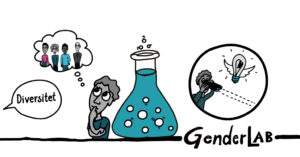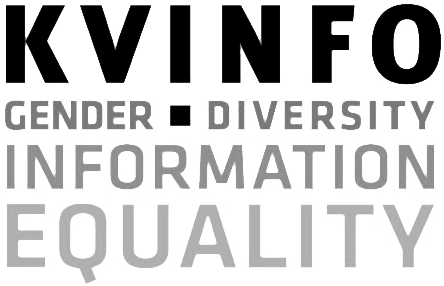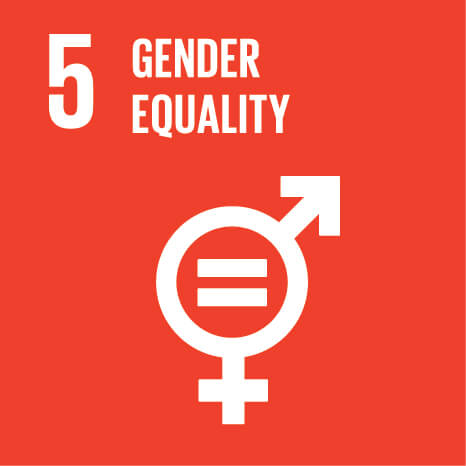By combing Design Thinking and norm critical methods, we ensure that a GenderLAB will provide you with a unique opportunity to create inventive and innovative tools for cultural change(s).

GenderLAB is a laboratory focused on testing the ground, on untraditional thinking, on experimenting and on testing solutions.
Firstly, challenges and problems are placed under a magnifying glass, discussed and analysed. Then solutions are developed; solutions that are scalable, implementable and measurable.
Both processes include a multitude of actors, thus ensuring a close correlation between knowledge and practice, which in turn ensures diversity in perspectives, identities and roles and thus creativity and quality in terms of ideas generation and solutions.
A GenderLAB is based on three recurrent elements:
A Physical Laboratory
The physical meeting and the facilitated process are characteristics of a GenderLAB. For instance, work may be carried out in smaller teams, where learning and new insight is generated alongside the development of a broader understanding of your specific challenge(s) as well as the experimentation with new tools.
The laboratory is the physical framework around the intensive innovation process that challenges you and your company or organisation in terms of how you usually do things, and it helps you change that practice with concrete tools.
Design Thinking
Design Thinking is a dynamic and interactive process, which ensures that you thoroughly understand the challenges of your target group. It is a method that both redefines problems and challenges ready-made assumptions and it helps you identify new and innovative solutions to problems, which can be very difficult to define.
The process consists of six phases:
- Knowledge: You identify problems and examine practices and thoughts that you and your workplace may take for granted on an everyday basis. It could, for example, be a question of how you work across departments or how you recruit new employees.
- Defining the Problem(s): You conduct research in order to confirm the problem(s) in order to enable you to come up with hypothetical solutions.
- Ideas Generation: You brainstorm possible solution models and tools with a group of diverse actors.
- Prototype: After the brainstorm, you select ideas for further development. This includes experiments with new technology and fine-tuning the chosen solutions.
- Testing: You implement the finished prototype(s) in your organisation, in close collaboration with KVINFO.
- Evaluation: We measure and follow up on results and reactions. Input will be transformed into learning, allowing you to further develop or create completely new versions of the chosen prototype(s).
This method is flexible and adjustable in accordance with existing needs or needs that manifest during work in the laboratory. Design Thinking is the practical aspect, which is then combined with norm-critical methods and relevant research.
Norm Criticism
Norm-critical methods shed light on norms and blind spots, and it allows you to investigate not just part of but an entire problem. It will help you to not get blindsided by a single detail or individual challenge. For instance, in the laboratory, you will be asked to approach a problem from a new angle by taking on a different role than the one you usually fulfil within your organisation. It is these assignments and methods that enable you to identify and explore problems and situations, which you are otherwise prone to overlook because they are taken for granted.
The combination of Design Thinking and norm-critical thinking allows for the creation of inventive and innovative tools to generate change. The norm-critical methods in particular ensure that the work we do is durable, because they are in themselves part of the culture-changing process.
In the laboratory, you will be working with prototypes, which are low cost and low risk, because they are tested and developed in collaboration with both target group and initiators. Not every prototype will result in direct changes, but they will help qualify the solution(s) to problems and they help prepare and equip the involved parties for handling possible mistakes later on in the process.
You will be guided and facilitated through each part of the process and you will have access to plenty of research-based knowledge, which KVINFO has gathered over several decades of working with gender, equality and diversity. Together we can then create the framework for both long-term solutions and ideas that can be implemented tomorrow.





